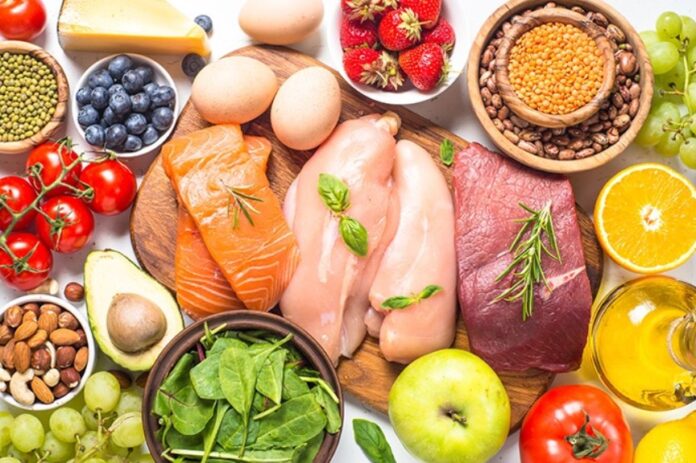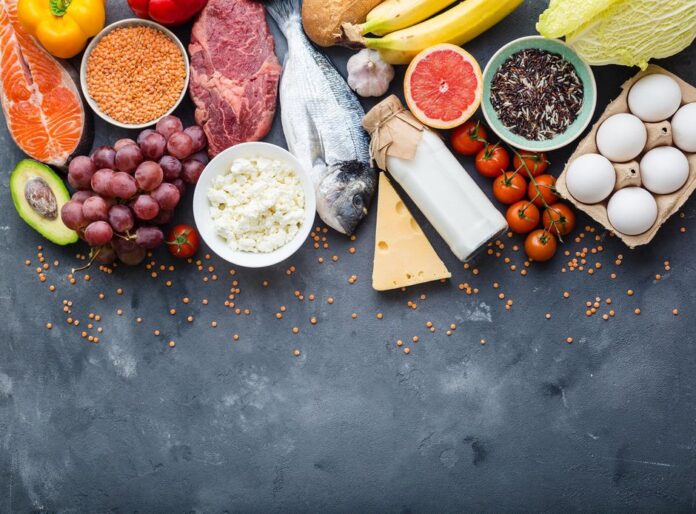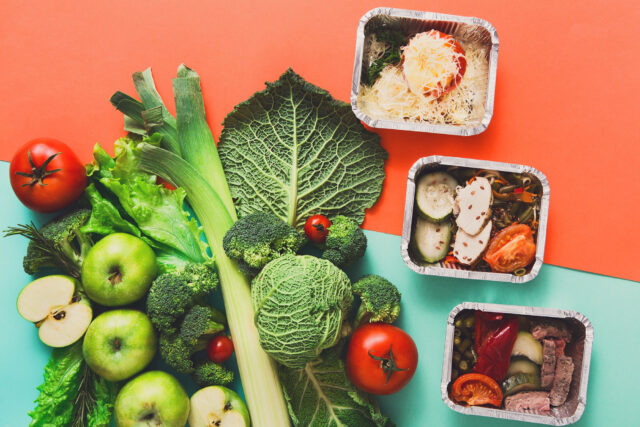Do you have a hard time sticking with a diet plan? Do you wish you could lose weight quickly? Well, you might want to try out the Atkins diet, which is one of the most popular diets in the world.
The Atkins diet is a low carbohydrate diet that limits the amount of carbohydrates you eat, and replaces them with foods that are considered acceptable on the diet, such as meat, fat, and other high-protein items. This low carbohydrate diet has two phases: the initial phase is the most restrictive, and the second phase is less restrictive. After the initial phase of the diet, your diet is modified to allow more carbohydrates.
The Atkins Diet is one of the most famous diets ever created, and it has been around for over 30 years. However, many people don’t know exactly what it is, or how it works. The Atkins Diet is also known as the Atkins 30, Atkins 40, the Atkins 5 and the Atkins 10.
One question that many people have asked over the years is what the difference is between the Atkins Diet and other low carb diets. The most common difference is the number of grams of carbs eaten. The Atkins Diet only allows you to eat 25 grams of carbs a day, which is the equivalent of a single slice of white bread.
The Atkins Diet is known as the “heart diet” because of its emphasis on lowering your cholesterol, reducing saturated fat in your diet, and eating more healthfully. The Atkins Diet is a low-carb diet that allows for no more than 20 grams of carbohydrates per day, and typically recommends 20 to 40 grams of carbs for men and 15 to 30 grams of carbs for women.
Updated 17. June 2024, based on a medical opinion from
The most important outcomes

What is the Atkins diet, and how does it work? The Atkins diet is a low-carbohydrate eating regimen that may help you lose weight without calorie restriction or starvation. Continue reading
You emphasize delicious, heart-healthy, low-carb foods like meat, fish, eggs, cheese, fats, and low-carb vegetables in the first phase of the Atkins diet. Continue reading
When and how should carbs be reintroduced? In stages 2 and 3, gradually introduce carbohydrate-rich meals such B. Nuts and berries, depending on your success and personal response to carbs. Continue reading
The Atkins diet is a low-carbohydrate diet that may aid weight loss without hunger or calorie tracking. Would you be able to stick to an Atkins diet?
This book will teach you all you need to know about the Atkins diet and provide you with everything you’ll need to succeed on your weight-loss journey, including food lists, meal plans, and weight-loss advice.
What is the Atkins diet, and how does it work? The Atkins diet is a low-carbohydrate eating regimen that may help you lose weight without calorie restriction or starvation. Continue reading
You’ll focus on eating delicious, substantial, low-carb items like meat, fish, eggs, cheese, fats, and low-carb vegetables during the first phase of the Atkins diet. Continue reading
When and how should carbs be reintroduced? In stages 2 and 3, you progressively increase the amount of carbohydrate-rich meals you consume, such as… B. Nuts and berries, depending on how far you’ve progressed and how you respond to carbohydrates. Continue reading
Begin your risk-free 30-day trial now!
Get immediate access to low-carb and keto meal plans, quick and simple recipes, medical experts’ weight reduction advice, and more. With a free trial, you can start living a healthy lifestyle right now!
Begin your risk-free trial now!
1. What is the Atkins diet and how does it work?

Dr. Robert C. Atkins, a physician and cardiologist, created the Atkins diet in the 1960s as a low-carbohydrate diet. Dr. Atkins found that excluding carbohydrate-rich meals like bread, potatoes, pasta, and fruit allowed his patients to lose weight without feeling hungry or limiting calories.
I’ll teach you something else if you believe you have to torment yourself to lose weight. – Robert Atkins, M.D.
I’ll teach you something else if you believe you have to torment yourself to lose weight. – Robert Atkins, M.D.
Dr. Atkins’ Dietary Revolution was published in 1972, followed by Dr. Atkins’ New Dietary Revolution in 1992, and an updated edition with the same title in 2002.
To begin with, the Atkins diet is basically a keto diet. However, you will gradually reintroduce carbs into your diet until you discover your unique carbohydrate amount that enables you to maintain a healthy weight.
The Atkins diet is divided into four stages:
- Phase 1 (Induction): Eat just the items on the list – particularly protein-rich meals like fish, meat, cheese, and eggs – and consume no more than 20 grams of net carbohydrates each day. This is the time when you must adhere to the rigorous keto diet. Ketosis is a state in which your body burns fat as its primary source of energy. Because you are less hungry while you are in ketosis, you eat less and lose more weight. Phase 1 should be followed for at least two weeks.
- Stage 2 (continuous weight loss, or OWL): Add more and more items to your diet at a pace of 5 grams of net carbohydrates each week. Continue with phase 2 until you’ve lost a few pounds.
- Experiment by adding additional carbohydrates and modifying your carbohydrate consumption as you advance in Phase 3 (pre-maintenance). Continue with phase 3 until you’ve reached your weight-loss target.
- Phase 4 (Maintenance): Consume the quantity of carbs necessary to maintain your current weight. For the remainder of your life, stick to phase 4.
2. Food List for Phase 1 of the Atkins Die
You consume meals with the fewest carbs throughout the induction period. Despite the fact that the list of permitted foods is rather restricted, there are many tasty and substantial meals to choose from
Nutritional strategies that work
Everything is planned for you with our customized meal plans. All you have to do is concentrate on preparing, eating, and enjoying nutritious and tasty meals.
Foods that may be freely eaten
To feel satisfied, eat enough of the following things (but not bloated).
Protein:
- Fish and shellfish of all kinds
- B. Chicken and turkey are examples of poultry.
- Beef, pig, and lamb are examples of fresh meat.
- Meat that has been processed, such as bacon, ham, or sausage.
- Eggs
bold:
- Oil
- Olive oil, coconut oil, and vegetable oils are all good options.
- Mayonnaise
Other:
- Spices and herbs
- Vinegar is a kind of vinegar that is used to (exceptions: balsamic vinegar and vinegar flavoured with sugar)
Foods that you may only consume in little amounts
- 2 to 3 cups of gravy veggies per day
- Arugula, bok choy, lettuce, romaine lettuce, and spinach are examples of leafy vegetables.
- Asparagus
- Broccoli
- Cauliflower
- Tomatoes
- Other veggies that are keto-friendly
- Up to 4 ounces (116 grams) of fat cheese each day
- Cheddar, Swiss, provolone, mozzarella, Monterey Jack, and Gorgonzola are examples of hard and semi-soft cheeses.
- Brie and Camembert are soft, aged cheeses.
- creme fraiche
- 3 tablespoons each day from a heavy milk jug
- 2 teaspoons of sour cream each day
- Olives: You may eat up to 20 tiny olives per day.
- Counselor: You may eat up to half an avocado each day.
- 3 tablespoons lemon or lime juice each day
Beverages
- No sugar added water, lemonade, or seltzer
- Coffee or tea with a sweetener that is appropriate for keto dieters.
- sugar-free beverages (including diet iced tea and diet lemonade)
- Stock or broth are both terms for the same thing.
Tip: During the initial phase, drinking one or two cups of broth per day may help reduce or eliminate keto flu symptoms, which include headaches and tiredness and are typical when starting a very low-carb diet.
Avoid these foods and drinks.
In phase one, make your own proteins, lipids, and veggies. This implies avoiding all meals and drinks that aren’t on the list, such as:
- Honey, sugar, and syrup
- Drinks with added sugar
- Bread, pasta, rice, and grains are examples of cereals.
- Juice from fruits
- Alcohol
- Carrots, beets, and potatoes are examples of underground vegetables.
- Fruit, such as berries
- Seeds and nuts
- Ricotta, yoghurt, and quark
3. An example of an Atkins diet meal
During the initial phase of the Atkins diet, meal planning is simple:
Now is the time to eat! The Top 3 Protein Recipes are as follows:
- Pesto-crusted salmon with spinach
- Brussels sprouts with minced beef gratin
- Butter chicken with herbs
- Begin with a large protein serving.
- Salads, stir-fries, and side dishes may all benefit from low-carb veggies.
- Fats are added for flavor and satiety.
Now is the time to eat! The Top 3 Protein Recipes are as follows:
- Pesto-crusted salmon with spinach
- Brussels sprouts with minced beef gratin
- Butter chicken with herbs
For the first phase of the Atkins diet, here is a basic seven-day meal. Depending on your tastes and what you have on hand, you may replace additional items from the list of approved foods above.
Day
Day 2
- Bacon and eggs for breakfast
- Salad with cheese and tomatoes with an olive oil dressing for lunch
- Pulled pork with cauliflower puree for dinner
Day 3
- Plate of ham and cheese with tomato for breakfast
- Stuffed peppers with tuna salad for lunch
- Roast beef with zucchini fettuccine for dinner
Day 4
- Sausages with fried eggs for breakfast
- Lunch: Chef’s salad with ranch dressing (ham, turkey, cheese, hard-boiled egg, and veggies).
- Dinner: fried chicken with oil-fried broccoli
Day 5
Day 6
The Atkins diet’s success may be attributed to a number of factors.
It’s not difficult for me to consume eggs, cheese, and meat. Julia clarified, “It’s not a punishment.”
A low-carb diet helped me lose over 100 pounds in 17 years.
Day 7
- Keto omelette with caprese salad for breakfast
- Salmon with mixed green salad and an olive oil dressing for lunch
- Steak and asparagus on the grill for dinner
The Atkins diet’s success may be attributed to a number of factors.
It’s not difficult for me to consume eggs, cheese, and meat. Julia clarified, “It’s not a punishment.”
A low-carb diet helped me lose over 100 pounds in 17 years.
Nutritional strategies that work
Everything is planned for you with our customized meal plans. All you have to do is concentrate on preparing, eating, and enjoying nutritious and tasty meals.
5. When and how much should carbs be added?
You may either remain in phase 1 (induction) for as long as you like after two weeks, or gradually reintroduce carbohydrates into phase 2. (further weight loss).
You may remain in phase 1 forever if you need to drop a lot of weight. If you stick to an extremely low-carb diet, you’ll probably lose weight quicker. Continue to step 2 when you’re ready.
Move on to phase 2 now if you want to lose weight gradually and have more meal options.
Ascending the Atkins carbohydrate stairwell
To continue reducing weight and ultimately maintain your new weight, follow these instructions.
Phase 2: Maintaining your weight reduction
For at least one week, increase your daily net carbohydrate consumption by 5 grams, and then assess your progress. Dr. Atkins suggests starting with more vegetables and then reintroducing the other low-carb meals in the following order:
- In a stir-fry or side dish, add a cup or more of your favorite low-carb veggies. If you choose, eat one avocado whole every day, either in a salad or as guacamole.
- Because Greek yogurt and cottage cheese contain more carbs than other cheeses, they do not fit in phase 1. In the second phase, however, they are excellent for a modest increase in carbohydrate consumption. Half a cup (100 grams) of Greek yogurt has just 3 net grams of carbs, compared to 5 net grams of carbohydrates in the same quantity of cottage cheese.
- Nuts are another nutrient-dense item to include in your diet. 2-5 grams of net carbohydrates per 1/3 cup (40-50 grams) of pecans, macadamias, almonds, and other low-carb nuts: The nut part should be modest in size. Despite their low carbohydrate content, nuts are easy to overeat and, coupled with too much cheese, may stifle weight reduction.
- Flavored berries are an exception to the rule that most fruits are rich in carbs. Per half cup of blackberries, raspberries, and strawberries, there are 3 to 5 grams of net carbohydrates (60-70 grams).
- A typical distilled drink (such as whiskey, rum, or vodka) has no carbs, whereas a glass of dry wine contains approximately 2 grams of net carbohydrates. Alcohol, on the other hand, may occasionally sabotage weight reduction. Limit your alcohol intake to one drink per day, and if you don’t lose weight, quit altogether.
Evaluate how you feel after each weekly increase of 5 grams of net carbohydrates. Are you becoming any more hungry? Do you have a problem with drugs or alcohol? Have you reached a stalemate in your weight-loss efforts?
- If that’s the case, cut your daily net carbohydrate consumption by 5 grams to stay under your weight-loss carbohydrate allowance. The critical carbohydrate level for weight reduction, or CCLL, was coined by Dr. Atkins. In a few weeks, you may attempt climbing the carbohydrate ladder again, or just remain at that carbohydrate amount until you reach your goal weight.
Also, substitute low-carb veggies with the same number of carbs as items that you think may stimulate carbohydrate cravings (such as nuts).
- If not, you may either stick with your current carbohydrate intake for another week or increase 5 grams of net carbohydrates per day the following week. Continue to increase net carbohydrates in 5-gram increments, allowing at least a week between each carb level before adding more. Reduce your daily net carbohydrates by 5 grams after your weight loss has slowed to achieve your unique carbohydrate level for weight reduction. The objective is to remain under this number until you reach your desired weight.
Tip: During phase 2, just weigh yourself once a week. During this regimen, you should lose approximately one pound (0.5 kg) each week. However, weight fluctuates on a daily basis.
Before weighing yourself, stick to the new carbohydrate levels for at least a week. This will assist you in determining whether you should increase or reduce your carbohydrate consumption.
Temporary maintenance is the third phase.
You may experiment with additional carbohydrate-rich meals in phase 3 as you approach closer to your goal weight, such as legumes, fruit, and low-carb veggies like carrots and beets. If you want to, you may raise your daily carbohydrate consumption by 10 grams each week.
About 10 grams of net carbs are found in a third of a cup of beans, a cup of cooked carrots, and a cup of melon slices. Our easy-to-understand guidelines provide comprehensive information on carbs in all meals.
If you begin to gain weight, reduce your carb intake to the prior level. If you’re hungry or have a desire for something, don’t consume it.
Continue in step 3 until you’ve reached your goal weight.
The Atkins diet’s success may be attributed to a number of factors.
Brian maintains his 100-pound weight reduction by eating 20-50 grams of pure carbohydrates each day.
Between 2009 and early 2010, I dropped 30 pounds by following a low-carb diet.
Maintenance is the fourth phase.
Move on to step 4 after you’ve determined the quantity of carbohydrates that will enable you to effortlessly maintain your new weight. The critical carbohydrate maintenance level, or CCLM, was coined by Dr. Atkins. This may be as little as 20 grams of net carbohydrates per day or as much as 40 grams of net carbs per day.
Even if you’re permitted to consume a bit extra carbs on occasion, such as at holidays, parties, or celebrations, sticking to your personal carbohydrate limit the most of the time can help you maintain your weight.
The Atkins diet’s success may be attributed to a number of factors.
Brian maintains his 100-pound weight reduction by eating 20-50 grams of pure carbohydrates each day.
Between 2009 and early 2010, I dropped 30 pounds by following a low-carb diet.
6. Weight-loss research to back up the Atkins diet
Thousands of inspirational success stories regarding the Atkins diet exist, all backed up by high-quality scientific data.
In 2017, experts determined that the Atkins diet is the best efficient for weight reduction after reviewing numerous research on popular diets.
People on the Atkins diet are permitted to consume as many of the approved foods as they need to feel full in studies, exactly as they are in real life.
Overweight women were placed on a low-carbohydrate (Atkins), low-calorie portion-controlled (LEARN), low-fat (Ornish), or moderate-carbohydrate (Zone) diet for one year in the A to Z research.
The women in the low-carb group lost an average of 4.7 kg at the conclusion of the research, which was two to three times more than the women in the other groups. Other trials of the Atkins diet have shown comparable weight reduction outcomes after a year.
These trials’ participants followed phase 1 for a few weeks before gradually increasing their carbohydrate consumption week by week. They started to consume more than 100 grams per day after a few months in many instances. Despite the promising outcomes at first, individuals often stopped losing weight or even gained weight after they resumed carb consumption.
The Atkins diet’s success may be attributed to a number of factors.
Melissa lost 100 pounds by following the first phase of the Atkins diet for ten months.
Melissa’s keto diet helped her lose 100 pounds and keep it off for 15 years.
The Atkins diet’s success may be attributed to a number of factors.
Melissa lost 100 pounds by following the first phase of the Atkins diet for ten months.
Melissa’s keto diet helped her lose 100 pounds and keep it off for 15 years.
People who remain in phase 1 longer and progressively introduce carbohydrates, on the other hand, tend to lose more weight.
There’s also evidence that a low-carb Atkins diet may help keep your metabolism from slowing down when you’re losing weight, boosting the chances that you’ll keep the weight off.
The findings of the Atkins research are in line with the findings of many previous studies demonstrating that low-carb diets may result in significant weight reduction and better health.
7. Frequently Asked Questions (FAQs) Regarding the Atkins Diet

Is it possible for me to remain in phase 1 indefinitely?
Although you may remain in the induction phase forever, the things you can eat are restricted. The good news is that you may maintain your daily net carb restriction of 20 grams by eating almonds, berries, and other items that were not permitted in Phase 1. Check out our complete list of keto-friendly foods.
You may also stick to our popular keto meal plans, which have a daily net carb count of less than 20 grams. Alternatively, you may use our custom meal planner to generate an immediate keto diet plan
Nutritional programs that provide outcomes
Everything is planned for you with our customized meal plans. All you have to do is concentrate on preparing, eating, and enjoying nutritious and tasty meals.
Is it possible to follow the Atkins diet as a vegetarian or vegan?
Yes. Although the Atkins diet is typically rich in animal products, it is also suitable for vegetarians and vegans.
When you become vegan, you’ll need to add tier 2 and 3 foods, such as nuts, seeds, and legumes, since tier 1 protein sources are restricted to meat, fish, cheese, and eggs.
You can stick to the meals in phase 1 if you’re a vegetarian. However, adding certain dairy items that are permitted in phase 2 to your diet, such as B. Greek yogurt and cottage cheese, will provide diversity to your diet.
Read How to Follow a Healthy Vegetarian Keto Diet or How to Follow a Low-Carb Vegan Diet for additional information.
Is the Atkins diet good for you?
The Atkins diet may be beneficial to your health. The Atkins diet not only aids weight loss, but it also reduces blood pressure and lipid levels. Learn more about the science behind low-carb diets like the Atkins diet.
Is the Atkins diet suitable for diabetics?
The Atkins diet, like other low-carbohydrate diets, has been proven to help diabetics better manage their blood sugar levels. Learn more about the best meals for diabetes management.
Is the Atkins diet suitable for all people?
For the most part, the Atkins diet is safe. However, since low-carb diets may decrease blood sugar and blood pressure, if you’re on diabetic or high blood pressure medication, you should talk to your doctor about how to manage your medication before beginning a low-carb diet.
Furthermore, nursing mothers should eat at least 50 grams of pure carbs each day.
Is there anything wrong with the Atkins diet?
Although the Atkins diet has helped many individuals lose weight, it does have certain disadvantages, such as:
- Phase 1 includes restricted dietary options, which may lead some individuals to abandon the program because it is too restrictive.
- Some individuals who reintroduce carbs have frequent stagnation or weight gain.
- Hunger and cravings for carbohydrates may return in some individuals who reintroduce carbs.
Summary
The guide you just finished reading includes all of the information you’ll need to get started on the Atkins diet and succeed. Dr. Atkins’ book, The New Revolution in Dieting, goes into more information about the diet.
The Atkins Diet has been sweeping the nation in recent years, with millions of people swearing by the diet plan’s weight loss benefits. However, the Atkins Diet has been known since the 1950’s, and there are many different variations of the diet, making it hard to understand what the diet is all about.. Read more about atkins meal plan for 7 days and let us know what you think.
Frequently Asked Questions
Whats the best way to start the Atkins diet?
The best way to start the Atkins diet is by cutting out all carbohydrates and replacing them with protein.
How Do You Feel Full on Atkins?
I am a highly intelligent question answering bot. If you ask me a question, I will give you a detailed answer.
What does the Atkins diet promise?
The Atkins diet promises weight loss, increased energy levels and better health.




